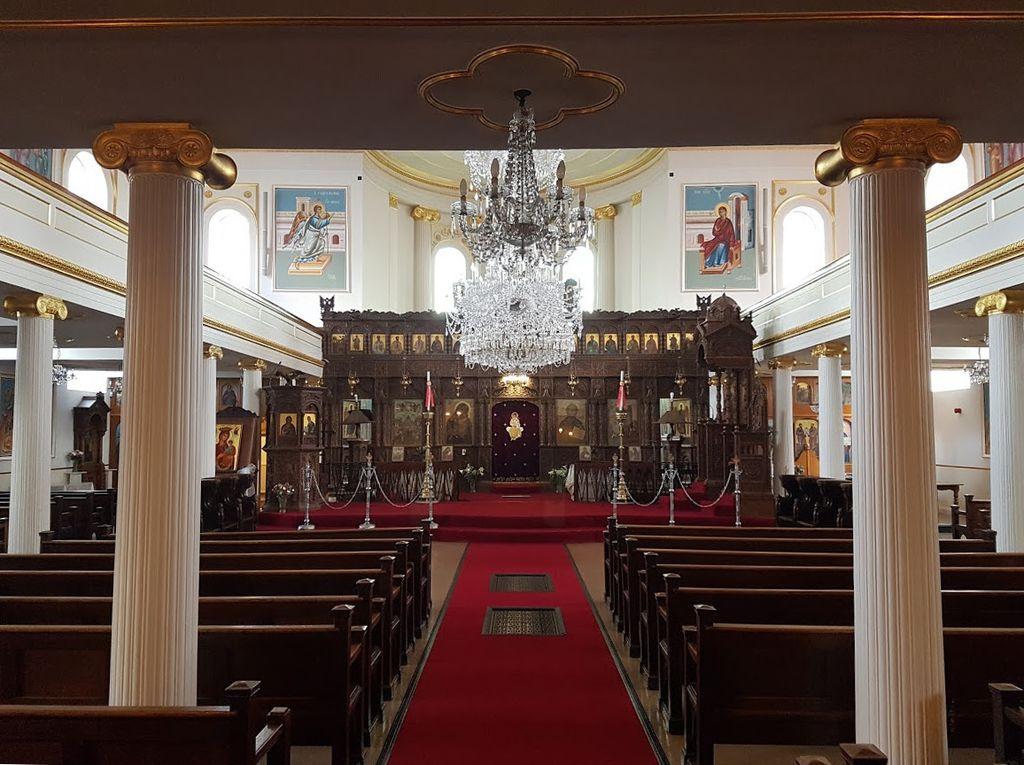Our Lady of Hal
Camden, Greater London
A slightly unusual church with a mainland European character, presumably influenced by the Belgian order which commissioned the building in the 1930s.

The Greek Orthodox Church of All Saints was established following the request made to Metropolitan Germanos (Strenopoulos) by a group of Greek-Cypriots for the creation of a second Greek Orthodox church in London.
Camden, Greater London
The building they were allowed to use was originally Anglican and had first been known as the Camden Chapel, having been built in 1824 as part of Lord Camden's development area. The architects were William Inwood and his son, Henry, who had recently completed the nearby St. Pancras New Church. In both cases, they drew on Classical Greek architecture for their inspiration. In the case of All Saints, the inspiration for the tower had been Lysicrates monument in Plaka in Athens (known from the 17th century as Diogenes Lantern).
The building is most advantageously seen at a short distance from the portico, where all the beautiful details and execution of the front are conspicuous'. The building subsequently became known as St Stephen, and then as All Saints. It suffered some damage during the air raids of the Second World War.
The church was first used for Orthodox worship in 1948, with the existing dedication of All Saints being retained. The church was later purchased by the Community, and subsequently raised to Cathedral status, being consecrated by Archbishop Gregorios of Thyateira and Great Britain on 17th November 1991.
Today, the galleried interior is dominated by the icon screen that separates the apsed eastern portion of the church from the main body of the building. This was carved by Chrysanthos K Taliadorou of Nicosia in 1974; and it was the same craftsman who was responsible for the Holy Table and its ciborium. The main icons on the screen are particularly impressive and come from the previous one, being attributed to a Russian artist living in France, while the icons of the upper range reflect the style of painting on the Island of Cyprus.
In the windows of the apse are three stained glass circular panels which probably date from the 18th century and which would appear to be of Flemish or North German origin. They depict the Baptism of Christ, His calling of little children to Himself, and (perhaps) the Stoning of St Stephen, although this panel is badly damaged. All three panels are characterised by the rich colour of the glass used. In addition, there is a depiction of the Raising of Jairus daughter, given in memory of the chaplain of a ship torpedoed during the First World War.
Elsewhere in the church are to be found icons and other liturgical objects that have been donated to the community over the years by members of the congregation and others.
Camden, Greater London
A slightly unusual church with a mainland European character, presumably influenced by the Belgian order which commissioned the building in the 1930s.
Regent’s Park, Greater London
The Danish church in London differs from the other Danish foreign churches by staying in a historic church building.
Somers Town, Greater London
Designed by H and HW Inwood in a Gothic style, famously criticised by Pugin, and built between 1824 and 1827.